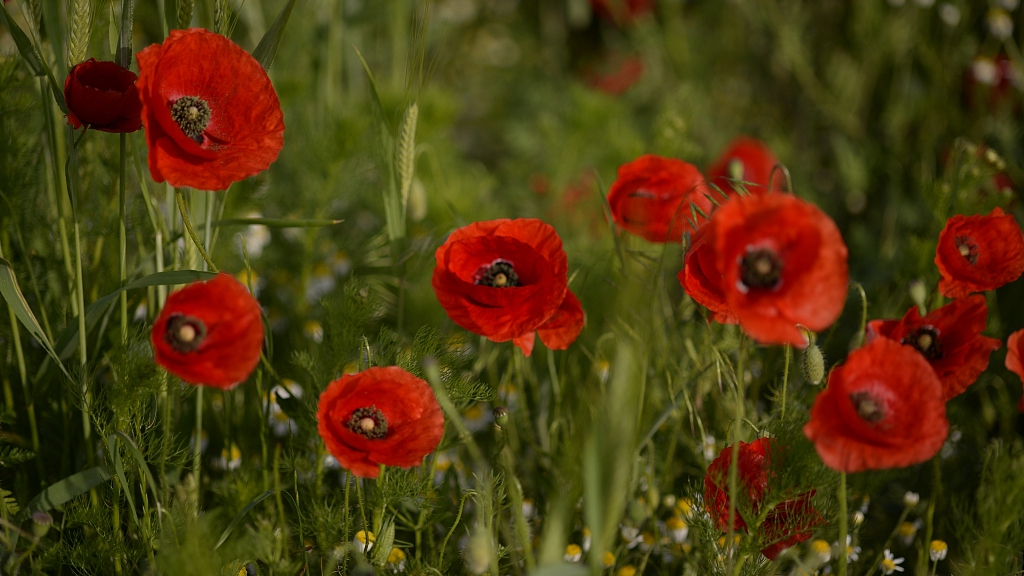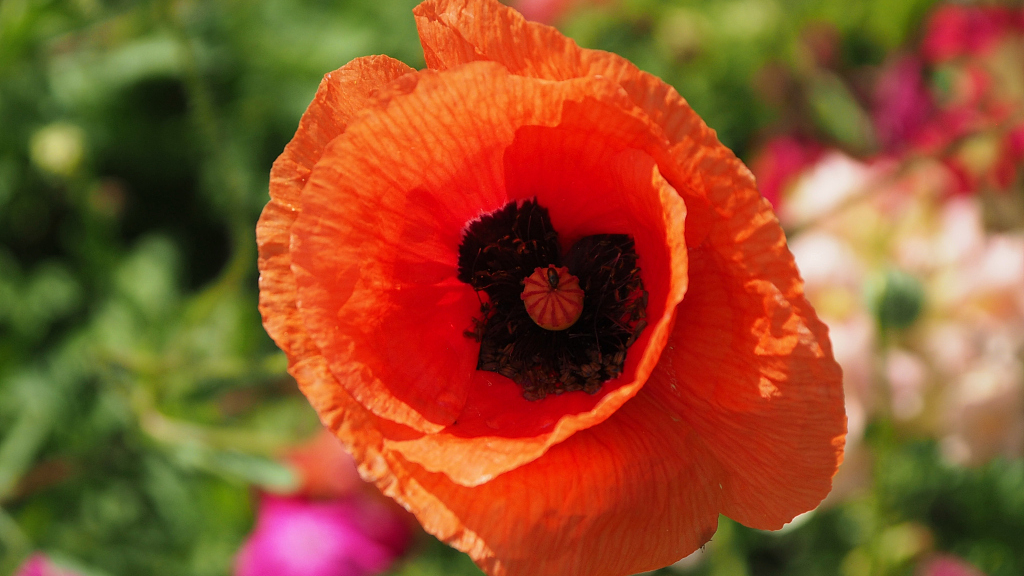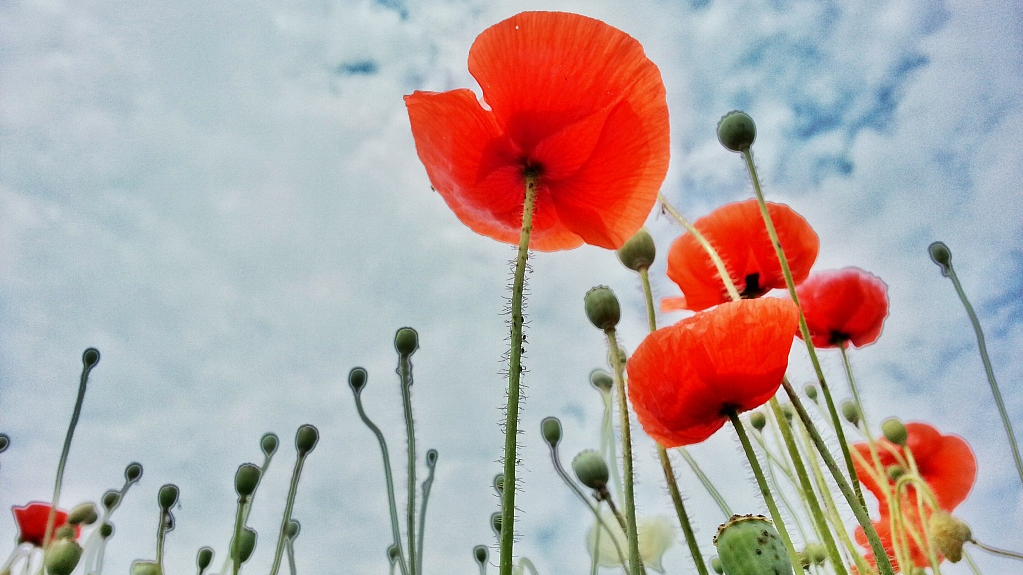

After mid-October every year, many people in the UK begin wearing a red flower – the corn poppy. Its petals are usually red with black spots beside the stamens.
Armistice Day, which commemorates the signing of the armistice agreement between the Allies and Germany on November 11, 1918, essentially ending World War I, is celebrated every year on this date. People wear red poppies to remember the soldiers who died in the war and raise money for veterans.

Corn poppy. /VCG Photo
Why use corn poppy as a symbol?
It is said that in May 1915, Canadian poet and WWI military doctor John McCrae buried the remains of his comrades and saw a hillside full of red poppies. He was deeply moved by the sight, and wrote a famous poem,"In Flanders Fields," which mentions the flower. Since then, the corn poppy has gradually become a symbol memorializing fallen soldiers. In 1920, French women sold handmade paper corn poppies to raise money to help orphans after World War I. Soon after, a British commander encouraged the sale of paper corn poppies to support veterans.

Corn poppy. /VCG Photo
(Video, cover image via VCG)
(If you want to contribute and have specific expertise, please contact us at nature@cgtn.com)

Copyright © 2018 CGTN. Beijing ICP prepared NO.16065310-3
Copyright © 2018 CGTN. Beijing ICP prepared NO.16065310-3